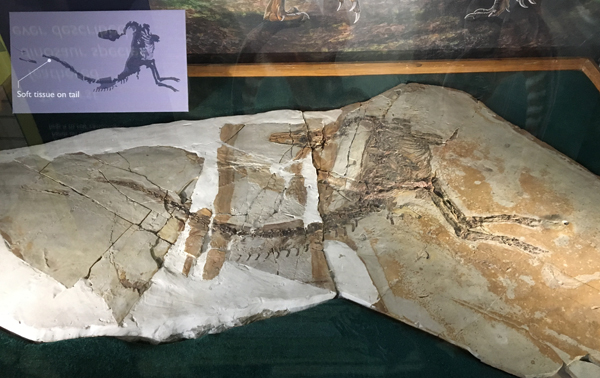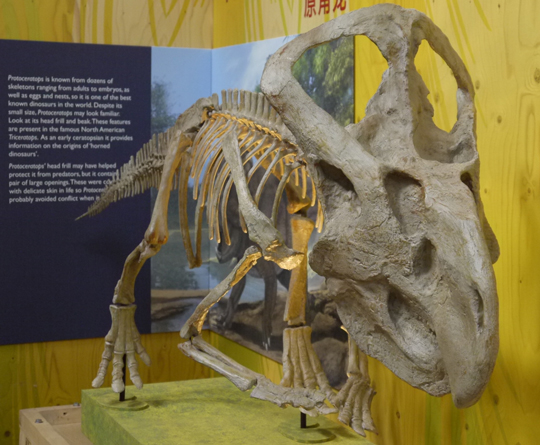Ancient Feathers found in Amber
According to the recent Proceedings of the Royal Society B a paper has been published on seven prehistoric feathers found encased in amber, the feathers may have once belonged to a dinosaur or an ancient bird. The feathers have been remarkably well preserved, the amber permitting scientists to see a rare snapshot of evolution in progress.
Prehistoric Feathers
It is not known whether the feathers belonged to a bird or to a dinosaur, however, Dromaeosauridae teeth have been found in the same locality. Pine resin usually forms lumps on the tree trunk as it slowly flows to the ground, lumps can build up as the resin encounters an obstacle on the trunk, so it is likely the feathers were engulfed in the trees, perhaps indicating that the feathers are more likely to be associated with a bird (avian) rather than a dinosaur (non-avian).
Only one feathered dinosaur known to date is believed to have had an arboreal habit – Microraptor (remains found in the famous Cretaceous deposits of Liaoning, China). Evidence from the clawed feet and hands indicate that it may have been an effective tree climber.
Amber is a superb medium for fossil preservation. It is unpalatable and therefore unlikely to get eaten. Amber is a sticky, often scented resin secreted by certain trees since Jurassic times as protection against disease and to help seal scars in tree bark. Insects, other organisms and debris can become entombed in the resin and fossilised when it hardens into amber.
This Cretaceous amber was excavated from a quarry in the Charente-Maritime region of Western France. Along with the Dromaeosauridae teeth, the teeth of another member of the Maniraptora was found nearby. These fossilised teeth have been identified as belonging to a troodontid dinosaur. Both Dromaeosauridae and Troodontidae families have bird-like characteristics and scientists speculate that many genera had feathers.
The finding of evidence of bird-like dinosaurs nearby is a point not overlooked by Vincent Perrichot of the Humboldt University, Berlin; one of the leaders of the project team.
Synchrotron Holotomography
Perrichot and his colleagues used X-ray synchrotron holotomography to image the feathers. This technology utilises a particle accelerator with magnetic and electric fields which allow users to “see” inside many types of materials, including very dense amber.
“Amber fossils are characterised by an exceptional quality of preservation that allows a detailed observation of all tiny structures,” the researchers stated.
When X-rayed, the amber chunk with the seven feathers, now stored at the National Museum of Natural History in Paris, revealed the feathers were lying side by side and the research team claim that they: “very probably originate from a single individual.”
The feathers exhibit what the scientists describe as an: “intermediate and critical stage in the incremental evolution of feathers, which has been predicted by developmental theories but hitherto undocumented by evidence from both the recent and the fossil records.”
Feathers of Modern Birds
Modern birds have a variety of feather forms, each one of which has evolved to do a specific job. There are the asymmetrical flight feathers, plus symmetrical, fine downy feathers and contour (body) feathers that provide insulation. It has long been speculated that the first feathers evolved in small, bipedal active predators such as the dromaeosaurs and troodontids to help keep them warm, to act as insulation. The first feathers, it is thought, consisted of a base shaft with loose barbs coming out of it, sort of like strands of hair secured together at one end.
Those proto-feathers may have been followed evolutionarily by an intermediate stage, represented by the newly identified feathers fossilised in amber.
The seven feathers “have a structure unknown in bird feathers,” on close inspection it can be seen that they are composed of long shafts that fuse progressively to form the central shaft. The seven feathers have a flattened appearance, which the researchers say is a “pre-requisite for using them to fly.”
This type of feather structure has been found in at least one fossil dromaeosaur, the specimen of Sinornithosaurus from the Liaoning deposits of China. It cannot be certain as to whether these feathers came from a dinosaur or from a bird. However, these fossil feathers do provide supporting evidence of a recent hypothesis regarding a multi-stage process in the evolution of flight feathers. This is an example of the fossil record providing evidence to support an existing scientific theory. The feathers represent part of the evolutionary journey from feathery down for insulation towards the development of asymmetrical flight feathers.
The Fossilised Remains of a Feathered Dinosaur

Sinosauropteryx on display – the first feathered dinosaur described. Picture credit: Everything Dinosaur.
Picture credit: Everything Dinosaur
The Chinese manufacturer PNSO have specialised in the production of exquisite feathered prehistoric animal models and figures: PNSO Dinosaur Museum Models and Figures.
This discovery is exceptional, the fauna and flora of forest environments do not have a high preservation potential, so little is known about Mesozoic woodland habitats. This piece of amber permits scientists to see a “snapshot” of evolution in progress from 100 million years ago.
The research team are to report their findings in the Proceedings of the Royal Society, Biological Sciences. This article has been compiled from a variety of sources including Jennifer Viegas of Discovery News.
Amber can be full of surprises, to read more about fossil finds in amber:
Ancient Harvestman Discovered in Amber.
To Bee or not To Bee – Ancient Bee provides Clue to Orchid Origins.
Evidence of Chemical Warfare from the Mesozoic.











